IBM® SPSS® Amos™ 28
In a latent variable model, there are two types of unknown numeric values:
1.Unknown parameter values and functions of parameter values
2.Unknown data values, including:
a.Data values that are missing
b.Data values for which there is partial information, such as ordered-categorical or censored measurements
c.Latent variable scores
In a Bayesian analysis all unknown numeric values are treated in the same way. The state of knowledge about any unknown quantity is represented by a posterior density that shows which values are probable. For unknown data values the posterior density is called a posterior predictive density or posterior predictive distribution.
Example
To illustrate the different kinds of unknown quantities, consider the following data and path diagram from Example 32 in the User's Guide.

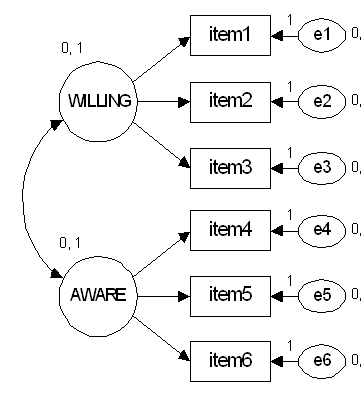
Each measured variable is the response to a questionnaire item on an ordered-categorical scale, with response categories SD (strongly disagree), D (disagree), A (agree) and SA (strongly agree). This path diagram and dataset provide examples of each kind of unknown quantity that Amos can estimate:
1.Unknown parameter values (for example, the covariance between WILLING and AWARE)
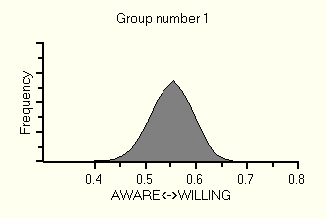
and functions of parameter values, for example, the implied correlation between item1 and item2,

2.Unknown data values, including:
a.Data values that are missing, for example, Subject 3's agreement with item1,
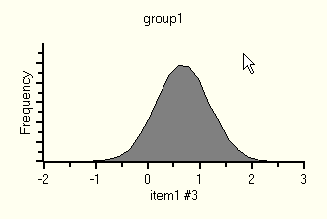
b.Data values for which there is partial information, such as ordered-categorical or censored measurements, for example, Subject 1's agreement with item1,
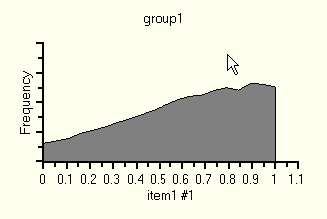
or Subject 22's agreement with item1,
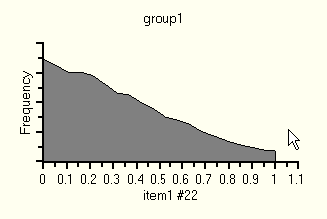
c.Latent variable scores, for example, Subject 1's score on WILLING,

To display posterior predictive distributions, click  on the toolbar in the Bayesian SEM window.
on the toolbar in the Bayesian SEM window.